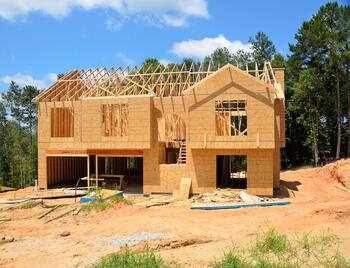
The nation’s number of occupied homes grew by 3.9 percent between 2019 and 2021, representing 4.7 million units of new homes, according to table B25032 of the American Community Survey. More than 98.5 percent of those new units were owner occupied, while rental housing grew by just 0.2 percent or less than 1.5 percent of total new homes.
More than three-fourths of new homes were single-family detached homes, reflecting the preferences of most (about 80 percent) Americans for such homes. Another 16 percent were single-family attached (row houses), while only 12 percent were multifamily.
Overall, homeownership grew from 64.2 percent of 64.1 percent of occupied homes to 65.4 percent. This seems like a large leap considering that the nation was in a recession for much of the period, but it shows that the pandemic persuaded many people to give up rental and multifamily housing for owned, single-family housing. Or, more likely, the increase in telecommuting that resulted from the pandemic allowed more people to give up rental and multifamily housing in favor of owned, single-family housing.
This is the opposite, of course, of what many cities have been trying to get people to do. For largely irrational reasons, many regions have tried to encourage more people to live in multifamily housing, which usually means more people renting.
The pandemic hasn’t helped those who have this goal. California recently passed a law encouraging developers to tear down single-family homes and replace them with multifamily. Yet in San Francisco, which has some of the most expensive and densest housing in the country, single-family detached homes grew by 1,214; single-family attached homes (row houses) grew by 4,566, and multifamily homes declined by 20,536. (This reflects occupied numbers; the actual number of multifamily housing units may not have declined.)
Similar trends can be seen in Los Angeles and San Jose, as well as in the San Francisco and San Jose urban areas as a whole: growth in both kinds of single-family, shrinkage in multifamily. (The Los Angeles urban area saw a growth in all kinds of housing.) Even Newport Beach and Palo Alto, the two cities in the country where the Census Bureau reports the median home price is more than $2 million, occupied single-family housing grew while occupied multifamily housing declined.
Overall, the state of California gained 293,000 units of single-family homes and lost 7,000 units of multifamily homes. Oregon also saw a growth in single-family and a decline in multifamily despite efforts by many cities in the state to promote multifamily housing. Washington managed to gain 5,000 units of multifamily (against almost 97,000 single-family), but the Seattle urban area, which has been the most aggressive promoter of multifamily in the state, lost 5,400 units of multifamily while gaining more than 38,000 single-family homes.
Since most multifamily is rented and most single-family is owned, it isn’t surprising that occupied rental units also declined in most places that saw a decline in multifamily housing.
Read the rest of this piece at The Antiplanner.
Randal O'Toole, the Antiplanner, is a policy analyst with nearly 50 years of experience reviewing transportation and land-use plans and the author of The Best-Laid Plans: How Government Planning Harms Your Quality of Life, Your Pocketbook, and Your Future.
Photo: courtesy The AntiPlanner












